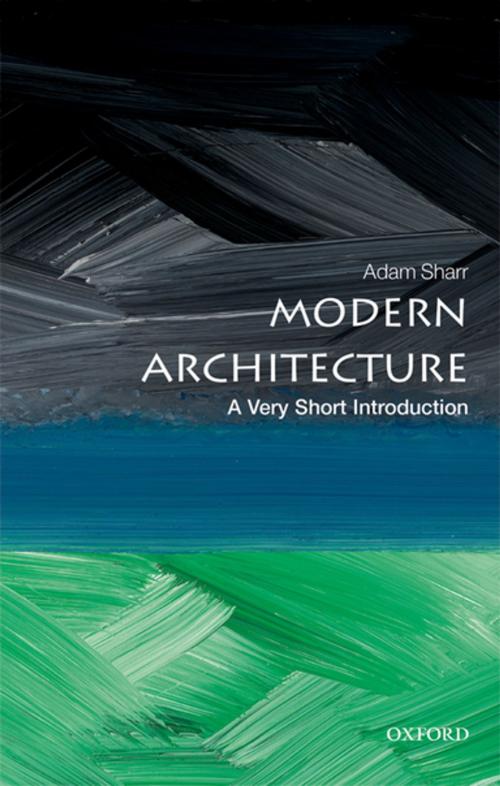Modern Architecture: A Very Short Introduction
Nonfiction, Art & Architecture, Architecture, Design & Drafting, Public, Commercial, or Industrial Buildings| Author: | Adam Sharr | ISBN: | 9780191086199 |
| Publisher: | OUP Oxford | Publication: | November 15, 2018 |
| Imprint: | OUP Oxford | Language: | English |
| Author: | Adam Sharr |
| ISBN: | 9780191086199 |
| Publisher: | OUP Oxford |
| Publication: | November 15, 2018 |
| Imprint: | OUP Oxford |
| Language: | English |
Somewhere between 1910 and 1970, architecture changed. Now that modern architecture has become familiar (sometimes celebrated, sometimes vilified), it's hard to imagine how novel it once seemed. Expensive buildings were transformed from ornamental fancies which referred to the classical and medieval pasts into strikingly plain reflections of novel materials, functions, and technologies. Modern architecture promised the transformation of cities from overcrowded conurbations characterised by packed slums and dirty industries to spacious realms of generous housing and clean mechanised production set in parkland. At certain times and in certain cultures, it stood for the liberation of the future from the past. This Very Short Introduction explores the technical innovations that opened-up the cultural and intellectual opportunities for modern architecture to happen. Adam Sharr shows how the invention of steel and reinforced concrete radically altered possibilities for shaping buildings, transforming what architects were able to imagine, as did new systems for air conditioning and lighting. While architects weren't responsible for these innovations, they were among the first to appreciate how they could make the world look and feel different, in connection with imagery from other spheres like modern art and industrial design. Focusing on a selection of modern buildings that also symbolize bigger cultural ideas, Sharr discusses what modern architecture was like, why it was like that, and how it was imagined. Considering the work of some of the historians and critics who helped to shape modern architecture, he demonstrates how the field owes as much to its storytellers as to its buildings. ABOUT THE SERIES: The Very Short Introductions series from Oxford University Press contains hundreds of titles in almost every subject area. These pocket-sized books are the perfect way to get ahead in a new subject quickly. Our expert authors combine facts, analysis, perspective, new ideas, and enthusiasm to make interesting and challenging topics highly readable.
Somewhere between 1910 and 1970, architecture changed. Now that modern architecture has become familiar (sometimes celebrated, sometimes vilified), it's hard to imagine how novel it once seemed. Expensive buildings were transformed from ornamental fancies which referred to the classical and medieval pasts into strikingly plain reflections of novel materials, functions, and technologies. Modern architecture promised the transformation of cities from overcrowded conurbations characterised by packed slums and dirty industries to spacious realms of generous housing and clean mechanised production set in parkland. At certain times and in certain cultures, it stood for the liberation of the future from the past. This Very Short Introduction explores the technical innovations that opened-up the cultural and intellectual opportunities for modern architecture to happen. Adam Sharr shows how the invention of steel and reinforced concrete radically altered possibilities for shaping buildings, transforming what architects were able to imagine, as did new systems for air conditioning and lighting. While architects weren't responsible for these innovations, they were among the first to appreciate how they could make the world look and feel different, in connection with imagery from other spheres like modern art and industrial design. Focusing on a selection of modern buildings that also symbolize bigger cultural ideas, Sharr discusses what modern architecture was like, why it was like that, and how it was imagined. Considering the work of some of the historians and critics who helped to shape modern architecture, he demonstrates how the field owes as much to its storytellers as to its buildings. ABOUT THE SERIES: The Very Short Introductions series from Oxford University Press contains hundreds of titles in almost every subject area. These pocket-sized books are the perfect way to get ahead in a new subject quickly. Our expert authors combine facts, analysis, perspective, new ideas, and enthusiasm to make interesting and challenging topics highly readable.















